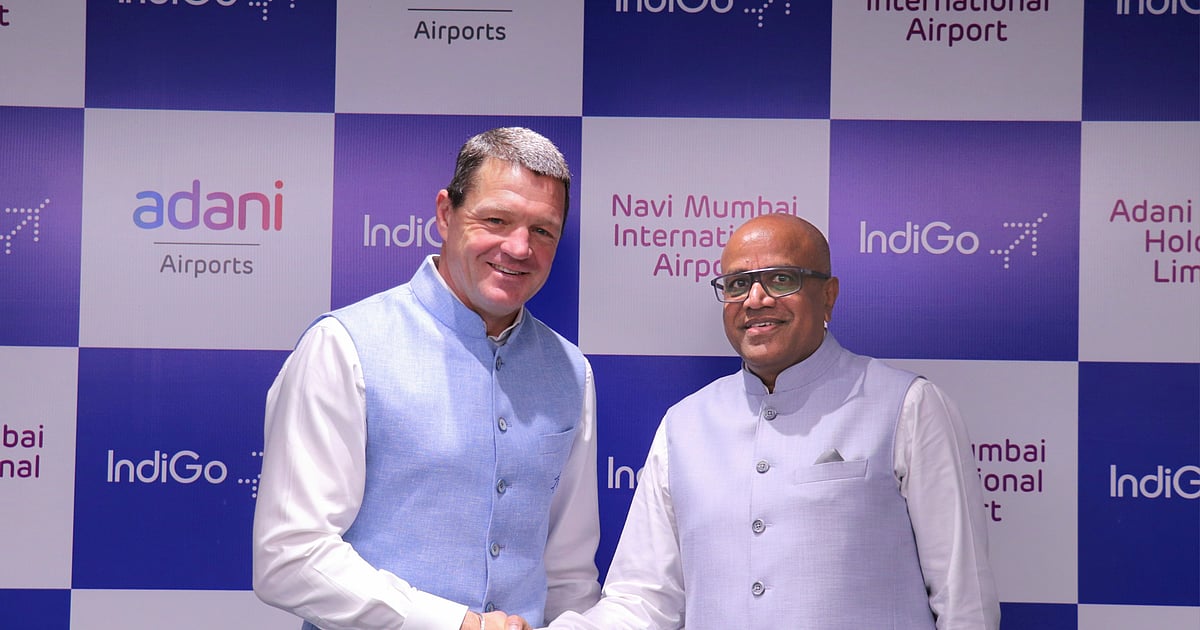IndiGo Takes Flight: 18 Daily Departures from Navi Mumbai Airport Set to Transform Aviation Landscape!
IndiGo’s Ambitious Launch at Navi Mumbai International Airport: A Game Changer for Indian Aviation
India’s aviation landscape is on the brink of a significant transformation with the commencement of commercial operations at Navi Mumbai International Airport (NMIA). As the largest airline in the country, IndiGo is poised to become a pioneer in this venture, with plans to operate an impressive 18 daily departures from NMIA to over 15 cities right from day one. This strategic move is set to significantly enhance air travel options for passengers and ease congestion at Mumbai’s existing airport, further establishing the region as a key player in global aviation.
IndiGo’s Flight Plans: A Strategic Expansion
IndiGo’s commitment to NMIA is bold and ambitious. The airline plans to initiate operations with 18 daily departures, translating to 36 air traffic movements. These initial routes will connect passengers to several domestic cities, setting the foundation for a robust network. This operation will grow substantially over the next few years:
- By November 2025: IndiGo will increase its daily departures to 79, which will include 14 international flights.
- By March 2026: The number will swell to over 100 daily departures.
- By November 2026: The airline aims for an operational capacity of 140 daily departures, with 30 of those being international flights.
This strategic expansion is not only about numbers; it signifies IndiGo’s commitment to enhancing connectivity and passenger experience in a rapidly growing market.
Collaboration with Adani Airport Holdings
The launch of commercial flights at NMIA marks the beginning of a critical partnership between IndiGo and Adani Airport Holdings Ltd (AAHL). This collaboration aims to bolster India’s ambitions to become the third-largest aviation economy worldwide by 2030.
- Private-Public Partnership: NMIA is constructed through a Public Private Partnership (PPP) model. Adani Airports Holdings Ltd holds a 74% stake, whereas the City and Industrial Development Corporation (CIDCO) of Maharashtra owns the remaining 26%. This collaboration showcases a modern approach to infrastructure development, tapping into both private investment and public resources.
- Economic Impact: The establishment of NMIA is expected to create a dual-airport system for Mumbai, relieving the pressures of an overburdened Mumbai airport. More airports mean more capacity and less congestion, which translates to heightened passenger satisfaction, reduced waiting times, and an overall enhanced travel experience.
Dual-Airport System: A Vision for the Future
NMIA’s arrival is a significant milestone for Mumbai, a city already recognized as India’s financial capital. The dual-airport system will not only offer enhanced capacity but also drive economic growth in the region. Some potential benefits include:
- Increased Air Traffic: With two major airports, the potential to accommodate a larger volume of flights facilitates better options for both passengers and cargo.
- Boost to Local Economy: The increase in flight operations is likely to spur local businesses, tourism, and employment opportunities in the airline and travel sectors.
- Improved Connectivity: The new airport will serve as a hub for both domestic and international flights, making travel to and from India more accessible for global citizens.
Looking Ahead: Challenges and Opportunities
While the launch of NMIA is likely to bring many benefits, it also presents certain challenges. Regulatory compliance, infrastructure readiness, and environmental considerations are crucial factors that must be addressed as operations expand. Moreover, competition among airlines will intensify as they seek to capture a share of the burgeoning market.
However, the broader picture reveals promising opportunities for growth and innovation within the Indian aviation sector. The timely and strategic expansion of NMIA comes at a period when domestic air travel is surging, driven by economic recovery and increasing consumer demand post-pandemic.
In conclusion, IndiGo’s plans at NMIA signal a pivotal moment for the Indian aviation industry. As the airline embarks on this transformative journey, it not only sets a precedent for operational efficiency and customer satisfaction but also plays a crucial role in shaping India’s aviation roadmap towards a more connected and prosperous future.
In a time when the world craves more efficient and connected travel networks, the eyes of the aviation community will be firmly set on Mumbai. With its ambitious trajectory, NMIA is primed to become a keystone in India’s aspiration to realize its full aviation potential by 2030 and beyond.





